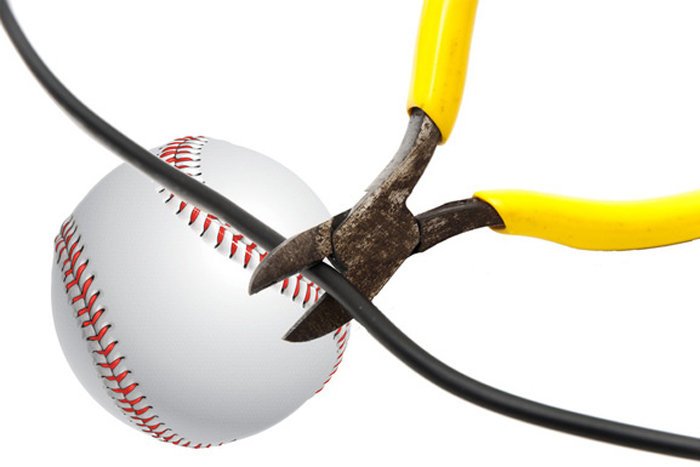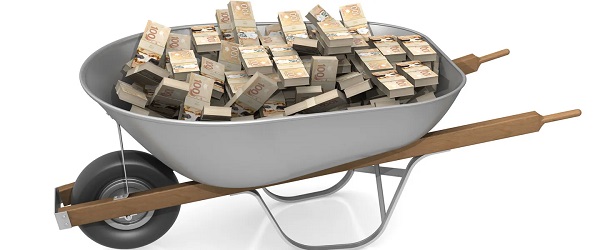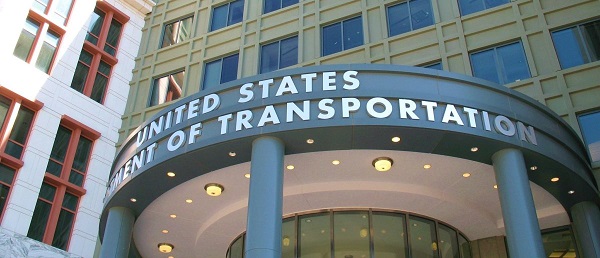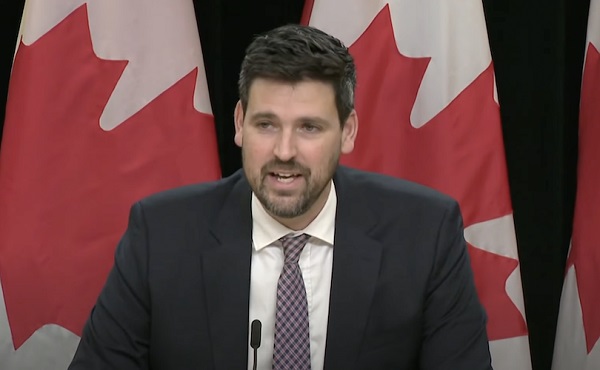Bruce Dowbiggin
Will Cable Cord Cutting Shock Pro Sports Back To Its Senses?

If there’s one constant in modern sports it’s bewilderment at how high salaries have risen for elite athletes. Where a million dollars a year was once the “unheard-of” threshold for salaries, today’s stars are easily taking home 20, 40, even 50 million a year under the new economy in sports. Even college athletes, once forbidden to accept remuneration, are cashing in millions for their name, image or likeness.
When people complain about overpaid athletes to IDLM we simply say the money is in the business, who else do you think should get the cash? Ditto for franchise values, where the Denver Broncos recently sold for a staggering $4.65 B. and the Washington Commanders might fetch $6B.
Largely the infusion of riches in pro sports has come from TV and digital-rights contracts between leagues and regional sports networks (RSN). Those RSNs are the carriers of the local and regional teams. Packaged through cable or satellite carriers they deliver valuable programming dollars to leagues. And for smaller media markets they are a vital source of revenue to keep up with the big boys whose ancillary revenues are pumped by many more customers.
As just one example, the MLB St. Louis Cardinals are currently earning about $66 million a year from their 15-year, $1B deal they signed with Fox Sports in 2015. There are 18 other teams on Sinclair/Diamond local TV deals, all of whom rely on RSNs to play New York salaries in Pittsburgh or Kansas City.
In Canada, as opposed to the American model, regional sports contracts are held directly by either TSN or Sportsnet, national carriers. The monopoly status has suppressed revenues to Canadian NHL, MLB or NBA teams relative to the deals cut in large markets such as New York’s tri-state area, southern California or Chicago.

Recently TV rights packages values were boosted by the arrival of Amazon, YouTube and Google which began to compete with traditional networks for U.S. broadcast rights. But now RSNs are threatened by the cord-cutting trend that sees American and Canadian consumers dumping their traditional bundlers of services to go à la carte digital directly with the producers of programming. ( In Canada the DAZN network has gone head-to-head with TSN for NFL games on a digital deal with the league.)
This past week the American cable giant Comcast reported a year-over-year 11 percent loss in its customer base. That’s about two million Americans saying “I can do without the middle men and the useless channels. I want to subscribe directly to the producers of the material I want to see.” From a peak of 110.5 million customers in 2013 the Comcast market is estimated to drop as low as 65 million customers by 2025.
In part this is consumers shedding programming bundles they never watch and bloated subscription fees as they tighten their belts. It’s also a reflection on the Netflix streaming revolution sparked by Covid-19 lockdowns that saw locked-down consumers get used to the convenience of directly streaming programming from Netflix or Amazon Prime or Disney without paying for a raft of useless channels.
Advertisers have noticed, too. They are headed to streaming services, where their messages can be more targeted to desired audiences than cable TVs scattershot approach.
The impact is being seen in the U.S. where Diamond Sports Group, which controls a huge portion of the pro sports RSNs, is said to be headed to bankruptcy court to restructure its $8.6B in debt. “There are a lot of business and financial terms and policies to work through,” says Deadspin, “but the long and short of it is that DSG is likely going to skip an interest payment it owes, which should be enough for them to get to the bankruptcy claim they’ve been rumored to be after for a while now.”
Bloomberg reported that if they file for bankruptcy it could “potentially put at risk crucial broadcasting rights revenues” for major North American sports networks. Greg Boris, a sports management professor at Adelphi University summed up the looming disaster for pro sports. He told The Score that RSNs have “been a golden goose. You remove cable TV from the scenario, and franchises are worth a fraction of what they are today, players make a fraction of their salaries today… the boom has been going on for almost 30 years. But the vast majority of the people that pay never watch (services they purchase). That’s been the model.”

Leagues are now investigating what to do if the RSN model collapses. Currently the leagues operate direct streaming services for customers wishing to watch out-of-town games not involving their local team. They could simply add the RSN rights too these streams.But direct-to-consumer can be very costly. The Disney+ operation was thought to be a slam dunk, but now management at Disney admits it will be a few years before the operation gets out of the red. American carrier Comcast launched the Peacock network as an outlet for NBC content. It lost $2.5B in 2022 and projects to lose another $2B in 2023. Similar startups such as CBC Gem have been flops.
Direct-to-consumer is also not the easy money machine that RSNs were. If a league or a team operates a direct customer service it takes on the responsibility of signing up and maintaining its customer base. That means dealing with the fickle fans who might drop his/ her package to an NHL, NFL, MLB or NBA team for a few years till the club improves.
That could be a disaster for underperforming teams like MLB’s Pirates or NHL Vancouver Canucks who had the assurance that, while their programming sucked, the other offerings on the cable package were worth customers retaining the service. Direct-to-consumer could, however, be a ray of hope for fans of bad teams that force clubs to finally get serious about producing a winning product.
This potential financial shortfall is probably one of the reason pro sports has so fervently embraced sports betting— to the annoyance of many fans. If the TV money goes, they’ll need every dollar they can find to pay out the contracts they’ve been issuing with impunity the past decade.
Sign up today for Not The Public Broadcaster newsletters. Hot takes/ cool slants on sports and current affairs. Have the latest columns delivered to your mail box. Tell your friends to join, too. Always provocative, always independent. https://share.hsforms.com/16edbhhC3TTKg6jAaRyP7rActsj5
Bruce Dowbiggin @dowbboy is the editor of Not The Public Broadcaster A two-time winner of the Gemini Award as Canada’s top television sports broadcaster, he’s a regular contributor to Sirius XM Canada Talks Ch. 167. Inexact Science: The Six Most Compelling Draft Years In NHL History, his new book with his son Evan, was voted the seventh-best professional hockey book of all time by bookauthority.org . His 2004 book Money Players was voted sixth best on the same list, and is available via http://brucedowbigginbooks.ca/book-personalaccount.aspx
Bruce Dowbiggin
Is Roundball A Square Game? Sports Betting Takes Another Hit

The most-heard response to last week’s FBI arrests of NBA stars in a gambling sting was “Why do athletes earning millions need to win thousands betting spots?” Coming on the heels of the apparent Shohei Ohtani coverup— his translator took the fall—it also begs the question just how legitimate are the games on which the public bets? Especially with pro sports now partnering with legalized gambling outfits.
There have long been stories of the high-stakes poker and golf games played by Michael Jordan, Charles Barkley and other mega sports celebrities. There was the shocking scandal of former NBA referee Tim Donaghy fixing games for gamblers. Hockey fans remember the tawdry 2006 episode of Wayne Gretzky letting his wife take the fall for betting debts with former NHL star Rick Tocchet.
Now this. NBA Hall of Fame member Chuancy Billups, the suspended coach of the Portland Traiblazers, and Terry Rozier of Miami Heat were the eye candy in the arrest, but the problems go much deeper. If you listen to people like former mob guy Mike Franzese, who now is a security consultant, the reality is not The Sopranos method of busting limbs and shooting deadbeats. It’s more subtle.
According to Franzese the biggest fear for those caught in the web of underworld gambling is exposure of their mistakes. They will do anything to avoid these problems becoming known to their families, their friends and, most of all, their employers. They think the best way to avoid exposure is to play along with mobsters, become a small pawn in crooked betting and poker rings. As if.
So how do they get caught up in there first place? As Franzese explains, “The competition they have on the field spills over into the dressing room, where athletes on the same team often compete with each other in what they think is innocent betting on other sports.” In short they feel like big shots in Guys and Dolls tossing around dice. No one will ever get caught. Pretty soon, these naïve young men are racking up debts in the tens and even hundreds of thousands.
Because they can’t go the bank to finance their debts they end up looking for money on the streets from bookmakers connected to the mob. (It’s why the underworld knew long before the news went public about the bets coming via Ohtani’s translator) And that’s where they get hooked.
The people holding their debt are happy to let their marks get even deeper in debt, so as to have a better grip on them. While the mob guys threaten violence, what they want most is a conduit to the action. So, in the case of Rozier or former Raptor Jontay Porter, they’re asked to shave points on the proposition bets offered on their production. In the case of Billups, they’re asked to front corrupt poker games with whales (big bettors) lured by the promise of celebrities at the table.
Whatever the hook, they hope they can quickly escape the trap, but soon they discover they’re captives till they are of no use in fixing results of drawing big card players. Because they’re often panicked or broke from a divorce or bad investment they try to make the money back quickly. For the reason that even a 60 percent winning percentage is considered high, repeat winners in the 80-90 percent range tip off authorities. Betting pros know not to be conspicuous but to accept a medium return over a long term. But Billups fleecing guys for big stakes in poker is not inconspicuous.
Most often they face the option of going bankrupt or turning evidence to the Feds to escape. Neither is an acceptable fate for someone who, until their habit tripped them up, was considered heroes and role models.

So how straight are the games that people trust for honesty? Especially now that legalized gambling has expanded the pool of bettors incrementally. With everyone looking for an edge or a secret source it’s a temptation trap. The pro sports leagues have security departments always win the lookout for suspicious behaviour, but they are loathe to expose those athletes who have gotten into the trap.
The leagues are also their own worst advocates. Even though Tocchet admitted to the 2006 gambling allegations the NHL has seen fit to let him coach in modern-day NHL. Gretzky turned in his innocence card when MGM needed a front man for its sports betting operation.

Current Tigers manager A.J. Hinch was the manager of the wining Houston Astros when they cheated in the 2022 World Series. And Ohtani continues to star with the Dodgers, despite leaving his gambling-addicted translator in the dressing room of the California/ L.A. Angels for almost five years to soak up the kind of info the mob craves.
Likewise the casinos and betting sites want no exposure from reckless gamblers. Combined with the addictive appeal of betting to the players and fans, the problems are not likely to diminish. As a famous robber once said when asked why he robbed banks, “Because that’s where the money is.”
Bruce Dowbiggin @dowbboy is the editor of Not The Public Broadcaster A two-time winner of the Gemini Award as Canada’s top television sports broadcaster, his new book Deal With It: The Trades That Stunned The NHL And Changed hockey is now available on Amazon. Inexact Science: The Six Most Compelling Draft Years In NHL History, his previous book with his son Evan, was voted the seventh-best professional hockey book of all time by bookauthority.org . His 2004 book Money Players was voted sixth best on the same list, and is available via brucedowbigginbooks.ca.
Bruce Dowbiggin
While America Shrugs Off Woke, Canada Doubles Down On Feminizing Society

There is a truism that politicians believe that strategy wins battles. Generals know that logistics win battles. Translation: You can have all the shiny new weapons but if you don’t have a delivery system to support them you’re going to lose.
The success of the Woke Left this past generation has been its creation of delivery systems in the media and culture to carry out their agenda. The result: a feminization of Western culture, exemplified by the manic hatred of 1980s alpha man Donald Trump. From their modest demand for “safe spaces” they now have rendered all criticism of social dysphoria as hate speech and the speakers criminal. Murder in the service of trans— suggested by Jane Fonda— is considered holy.
Writes conservative political analyst Helen Andrews.. “Everything you think of as wokeness involves prioritizing the feminine over the masculine: empathy over rationality, safety over risk, cohesion over competition… The most important sex difference in group dynamics is attitude to conflict. In short, men wage conflict openly while women covertly undermine or ostracize their enemies.” Translation: If it feels good it must be correct.
As we noted in June emotional narratives now override facts in public discourse. The currency in this societal change has been victimization as the badge of virtue. Young women, in particular, are willing to believe even the most outlandish claims of victimization in exchange for credibility in the Woke camp. One example from the past week’s No Kings performative marches example: Women are being ignored in media or being discriminated against in hiring or academia. As if.

No Kings had all the hallmarks of the victim strategy. A predominately female, plus-60 audience and their handlers from the education system, all united in loathing Donald Trump. The shared distress brought on by POTUS 47. A Hollywood component led by Kathy Griffin.
So, after all the bonding and talking, what message did they take away from the large crowds and media love? Was it empathy or rationality? As Andrews writes, “The outcome of a discussion is less important than the fact that a discussion was held and everyone participated in it.” Besides a few pathetic folk songs, badly written signs, cheeky assassination memes they mostly took away a feeling of unity. It was, like Stalin’s Soviet Union army parades, a display of the delivery systems they’ll use to enforce loyalty in the future.
For organizers who know they’re not going to get rid of POTUS 45/ 47 anytime soon, there was the added confidence that this base will fall obediently in line when the nomenklatura call them to do their bidding— the same way they did on lockdowns, vaccines and pussy hats.
The problem for the Left’s leaders after all the Charlie Kirk references and Pete Seeger nostalgia is that the delivery system is still struggling to find a new wedge weapon to slow down Trump. (He’s still polling in the high 40s approval with pollsters who correctly called 2024.) All the Congressional shutdowns, Epstein references and Putin references that worked before are now failing.
“CNN: This shutdown is a different world for Trump than the 2018-19 shutdown. He’s in a much better spot. Here is his Shutdown Trump Net Approval
Blame Trump for Shutdown:
2019: yes 61%
2025: no 48%
Worse, support for critical issues such as trans is falling. Canadian political scientist Andrew Kaufman shocked progressives with polling showing that trans identification is in free-fall among the young the past five years. So is nonbinary identity. (Pretty soon only their demented parents will buy the grift.)
As well, Congressional district adjustments could give the GOP as many as 20 new seats in the midterm. Hence the broad hints at violent civil unrest from the more excited paraders this weekend. And the disingenuous claims of how peaceful the Left was on the weekend. In short it was No Kings. No New Ideas.
While America roils in the dynamics of a Woke retreat, Kaufman points out that Canada remains entirely in the thrall of the feminized morality introduced by Justin Trudeau’s election ten years ago this month in 2015. “Liberals: Stop importing US politics into Canada. Also Liberals: Hey look, the U.S is holding a ‘No Kings’ protest. Let do it too.”
The image of the hip, sexually ambiguous Trudeau has been followed by the feminized Mark Carney with his trans child. The symbolism is no accident. The Canadian Left’s rock/ paper/ scissors emotion now trumps irrationality. Canadians questioning dysphoria or promoting traditional male roles is now punishable by firing or banishment from social media. Emotional blackmail is a delivery system for Canada’s left. But it only goes one way. If you act like a traditionsl man publicly (see: Danielle Smith) your female cloak of supremacy loses its superpowers.

While the U.S. Left struggles the political delivery system Canada is, by contrast, armed to the teeth with live feminist ammo aimed at Pierre Poilievre. Somehow the meek bureaucrat from Ottawa is painted as mini-Trump by the heavy hitters of the Left. The past week saw the titans of the keyboards twist anti PP comments from a former Stephen Harper aide into an attack from the former PM. It took hours before Harper’s office quashed the implications of Polievre hate, too late to expunge the scars.
Elbows Up aficiandos took their shots, too: “Here’s a sample: @PierrePoilievre has desecrated the memory of my father and insulted every officer who has served in the RCMP. This cannot be forgiven or forgotten.” This after Poilievre asked why it was not an issue that a fired Minister of Justice, Jody Wilson Raybould, was not allowed to ask why Skippy didn’t want the RCMP to do their job. This was 14 times she was told to stand down on issues over Trudeau’s donors.
To forestall any rejection of Woke, Carney’s strategy is to turn Canada in the direction of ultra-liberal Europe and away from Trumpland. But the logistics of a crumbling economy and separation on several fronts in Canada may take the decision out of his hands.
Bruce Dowbiggin @dowbboy is the editor of Not The Public Broadcaster A two-time winner of the Gemini Award as Canada’s top television sports broadcaster, his new book Deal With It: The Trades That Stunned The NHL And Changed hockey is now available on Amazon. Inexact Science: The Six Most Compelling Draft Years In NHL History, his previous book with his son Evan, was voted the seventh-best professional hockey book of all time by bookauthority.org . His 2004 book Money Players was voted sixth best on the same list, and is available via brucedowbigginbooks.ca.
-

 Business2 days ago
Business2 days agoTrans Mountain executive says it’s time to fix the system, expand access, and think like a nation builder
-

 Alberta2 days ago
Alberta2 days agoPremier Smith sending teachers back to school and setting up classroom complexity task force
-

 Alberta2 days ago
Alberta2 days agoThousands of Albertans march to demand independence from Canada
-

 Crime2 days ago
Crime2 days agoSuspect caught trying to flee France after $100 million Louvre jewel robbery
-

 Addictions2 days ago
Addictions2 days agoThe Shaky Science Behind Harm Reduction and Pediatric Gender Medicine
-

 Business2 days ago
Business2 days agoClean energy transition price tag over $150 billion and climbing, with very little to show for it
-

 International1 day ago
International1 day agoStrongest hurricane in 174 years makes landfall in Jamaica
-

 Business2 days ago
Business2 days agoFlying saucers, crystal paperweights and branded apples: inside the feds’ promotional merch splurge









